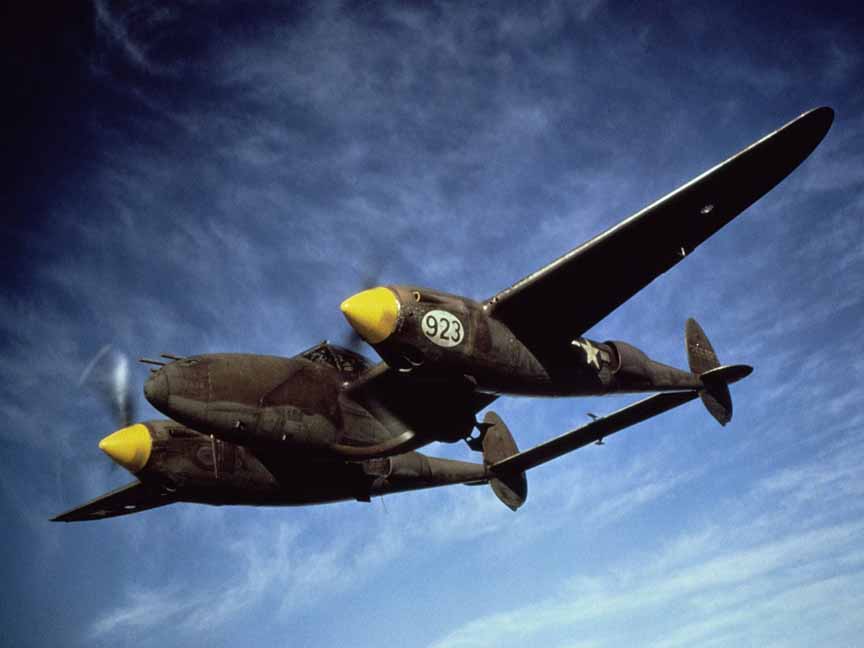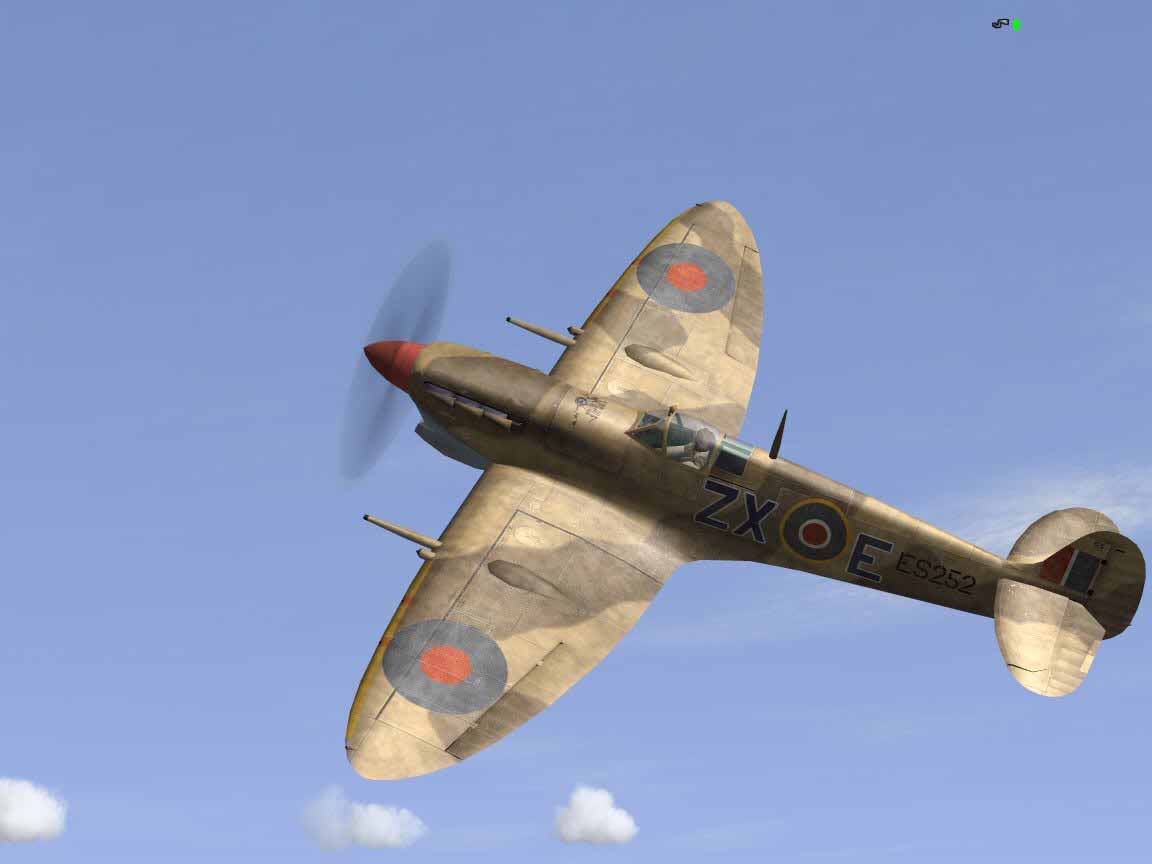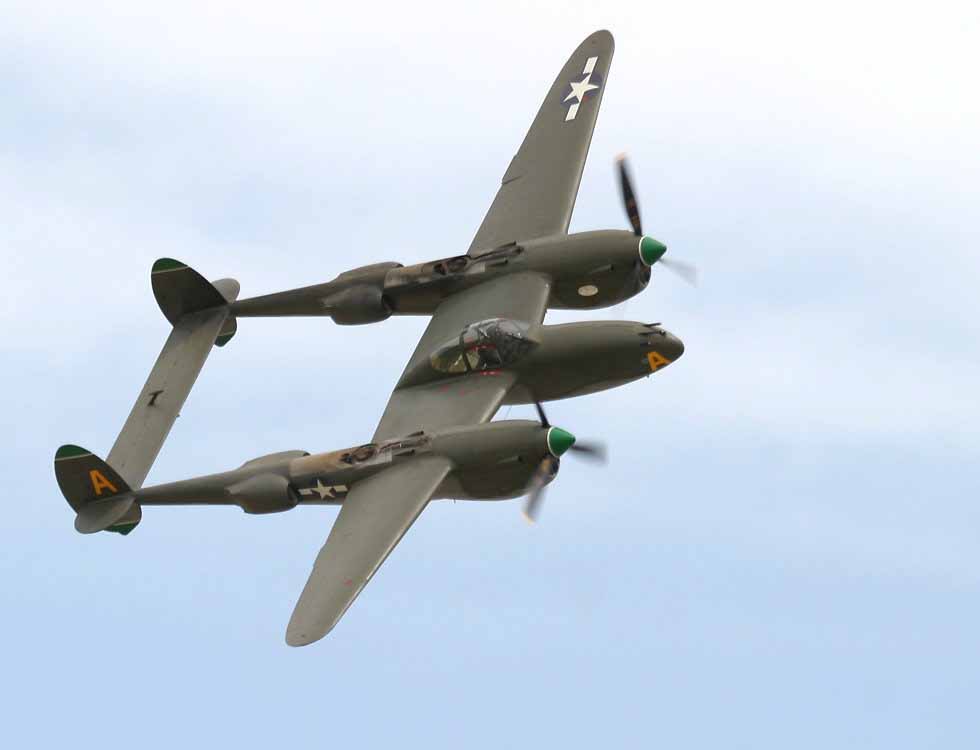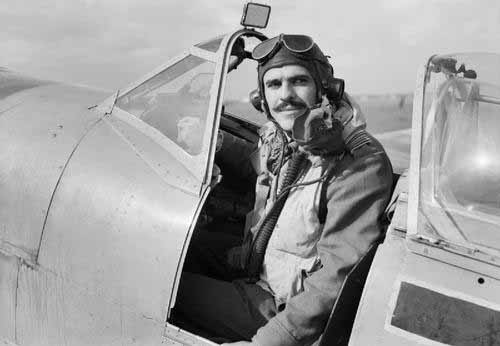
CORONADO’S COL. DICK KENNEY GIVES LESSON IN HUMILITY TO BRITISH FLYING ACE
CORONADO Every Memorial Day we celebrate our veterans and active duty military. Usually the stories we hear are about long marches, the ultimate sacrifice and fallen friends. This, however, is a story about pride. It’s a tale of two pilots engaged in a duel in the sky over the North African desert. It was not a fight to the death. It was a battle over pride and honor.
It takes place in 1943, at the end of the North African Campaign. The Germans had surrendered but the war was far from over. Several small airstrips on dry lakebeds housed pockets of allied aircraft preparing for the next stage of the war – air attacks on Germany itself. The key to winning in North Africa had been controlling the air space above it.
A young Dick Kenney inspects the flight board before what was to be his last flight of WWII. He would be shot down and spend the remainder of the war as “guest” of the Germans.
Coronado’s Lt. Dick Kenney was a lanky 23-year-old, flying a P-38 Lightning with the 12th Air Force’s 95th Squadron out of Berteaux. As flight commander, he and his three wingmen had earned some free time and decided to explore abandoned German airstrips and grounded planes.
They landed at Bizerta, near Tunisia, but were ordered to leave because the Germans had mined the airplanes and airstrip. Low on fuel, the four P-38s flew off, continuing their search. Before long, they caught up to a lone British Spitfire returning to his base. Dick signaled with his wings and when the Spit came alongside he relayed they were low on fuel. The Brit responded to follow him.
The Lightning and Spitfire on the ground gives good comparison of the size of the two planes.
They soon set down on the airstrip of the 145th RAF Squadron. Once they landed, the British wing commander invited them to the Officers’ Club for lunch while their planes were being fueled.
“I had never seen anything like that,” recalled Dick Kenney recently from his home in Coronado. “They had a big tent set up, and inside it was the largest Persian rug I’d ever seen. I remember a Baby Grand piano in the corner, with three legs and a box propping up what was left of the fourth. Numerous African batmen were walking around with white towels across their arms personal servants to the British officers lounging there. I can’t remember what we ate, but it was a far cry from the field rations we had been living on.”
The RAF Spitfire
As to be expected, pilots gathered around and began to swap stories. Outside, the roughly painted P-38s sat next to several shiny, brightly painted Spitfires. The RAF was a proud lot. They had taken a beating early in this war and were now giving it back, in spades. In typical British fashion, the pilots began to goad Kenney by calling his ship, “a big hunk of junk.” The other Brits thought that pretty funny.
Kenny shook his head at the retelling of the story. “That didn’t sit well with me,” he said, “but I let it go. Then one of them asked me if I’d ever fought a 110 (a large, German fighter plane). I said No Problem.’ And that’s when our lunch got competitive.”
The Lockhead P-38 Lightning, similar to what Dick Kenney flew in World War II.
As background, the Messerschmitt BF 110 was a twin-engine, heavy fighter. The Germans called it “Zerstorer,” which meant “Destroyer.” It was a popular plane with the Luftwaffe as it was armed with two 20mm cannons, four MG 17 machine guns and one MG 15 machine gun. It generally lacked agility in the air, which was its primary weakness. It was used in the North African Campaign as ground support and on night raids.
Kenney’s plane, the Lockheed P-38 Lighting, was nicknamed “the fork-tailed devil” because of the distinctive twin booms and a single cockpit in the center. It was used for dive-bombing, skip bombing, night fighting, ground-attack and photo reconnaissance missions. It was successful as a long-range escort fighter when equipped with drop tanks under the wings. The P-38 carried a 20 mm cannon, four rocket launchers, four M2 Browning machine guns and could carry a respectable load of bombs.
The cockpit of the P-38 Lightning. Imagine 6’2″, 190-pound Dick Kenney wedged into this cockpit for hours at a time.
As guests of their allies, Lt. Dick Kenney and his wingmen tried to appear gracious and gentlemanly, but when the conversation turned to comparing British and American planes, and their successes in the sky, Kenney refused to back down. After defending his airplane’s record against the Messerschmitt 110, he boasted that P-38s had been known to turn inside a Spitfire. The room grew silent. Kenny had inadvertently insulted their airplane.
One of them asked if Kenney and his men wouldn’t mind waiting half an hour longer, to meet their Squadron Leader, Lance “Wildcat” Wade – an American, who had become Great Britain’s greatest flying Ace, with 25 confirmed kills and as many more unconfirmed.
Lance “Wildcat” Wade, in the prime of his life as a RAF flying Ace in the North African Campaign.
“I said, Sure!'” remembered Kenney. “When Wade got there we greeted each other and his men told him of my comment about turning inside a Spit. Wade decided there was only one thing to do. He offered to fly his Spit against my 38. There was no turning back at that point, so I dropped my belly tanks and we got into our planes.” Kenney’s P-38 was painted dirt brown to match the desert below. Wade’s Spitfire boasted a colorful fighting rooster standing in front of an American flag, and the circular red, white, blue and yellow emblems on the wings and fuselage so typical of the Spits.
Ironically, Wade was an American too. He was a young Texas farmer in 1940, when he ran off and volunteered to fly and fight for England and the Royal Air Force. He lied about his age and his flying background to get into the RAF, and he never looked back.
Dick Kenney describes the challenge: “We taxied to opposite ends of the field, then turned and gunned our engines for take off. We met in the air above the landing strip. I had him in my gun sights more than once; I stayed on his wing throughout; and even turned inside of him twice, which his men didn’t believe was possible. It must have been quite an aerial circus to those Limeys on the ground.
“They all assumed I had the bigger and slower ship, but the P-38 had power flaps and the twin engines made it stable. When he got behind me with his single engine, his plane would start flopping around. I could out turn everything we had in the air at that time. Usually we didn’t use combat flaps when flying, but I used them that day,” said Kenney.
Coronado’s Colonel Dick Kenney, at his home. Photo by Joe Ditler.
Here’s this kid from Coronado, overflowing with raw talent and guts, humiliating the war’s greatest flying ace and squadron commander of the 145th, in the sky, above his entire squadron. Their maneuvers weren’t choreographed. It was simple, an unrehearsed dogfight – one plane trying to out maneuver the other. Sailing ship captains would call that, “winning the weather gauge.” It was an old-fashioned air duel steeped in tactical tradition, with the pilots’ honor on the line.
When Dick Kenney arrived in England from Coronado, he had trained on both Spitfires and Lightnings. He and the other young pilots rat raced both planes at the beginning of the war, over Ireland and England, before deploying to North Africa. He loved flying both planes, and knew what each could and couldn’t do. The Spitfire may have been a faster airplane, but not with Dick Kenney at the controls of the P-38.
In his den, Colonel Dick Kenney looks over some of the wartime memorabilia he has accumulated. Photo by Joe Ditler.
“I remember I was soaking wet when we landed,” said Kenney. “We were only in the air for probably half an hour, but it was an intense exercise. It was something I’m sure nobody who witnessed will ever forget, and there are probably some of those British pilots still around talking about it.”
After the two pilots landed, they approached and shook hands as the runway filled with both British and American pilots and crews. “Lance Wade had an acquired British accent by now,” said Kenney “I remember he said to me, Well, you right me once, and you right me twice, but I think I was faster.’ I let that comment slide, because I knew I had just bested the Ace of the North African Campaign and the best the RAF had to offer,” said Kenney.
Colonel Dick Kenney, holding a birthday present a license plate holder exclaiming, “I’d rather be flying a P-38.” Photo by Dot Harms.
Later that year, Dick Kenney was shot down by ground fire over Sicily in a bombing raid to take out a heavily guarded radar tower. He spent the remainder of the war as a prisoner in Stalag Luft III the notorious inspiration for the movie, “The Great Escape.” He received the Distinguished Flying Cross, two Purple Hearts, and had four confirmed kills one shy of becoming an Ace.
Only a couple months later, Wade would be killed while taking off in his plane, which unexplainably climbed from the runway and then went into a spin and crashed. Some have suggested German pilots had tampered with his plane. British history is vague about Wade’s contributions to the war effort, possibly because he was an American. But what is documented is that he was one of the best pilots of the war, the most successful pilot in the war over North Africa, who spread an amazing wrath of destruction on the Germans.
Colonel Dick Kenney reads from a book of Christmas poems he wrote. Photo by Joe Ditler.
Today, at the age of 94, Colonel Dick Kenney resides in his hometown of Coronado. He writes poetry. He still regrets not achieving that elite status of “flying Ace.” But, certain memories from the war bring a smile to his face. This was one of them.
– Joe Ditler
Writer/Historian















